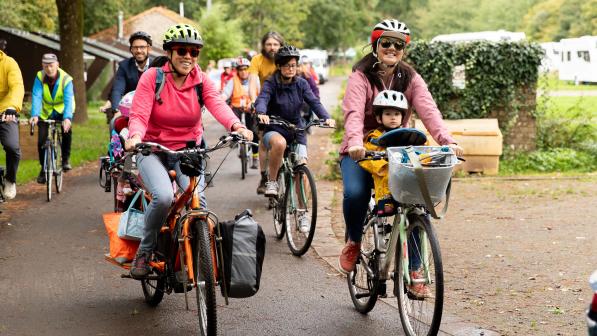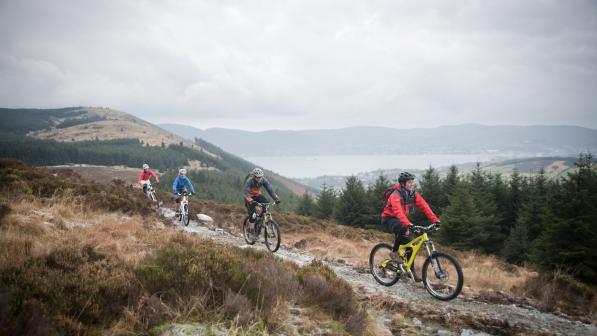A new Highway Code and a hierarchy

People have been asking us for months when the new Highway Code rules would come into effect.
The Department for Transport (DfT) confirmed in July that it intended to introduce all the amendments proposed in a consultation last year, though we were still waiting for the final text.
New rules laid today
The proposed rules have now been published, with an explanatory table and are being laid before parliament today. The Secretary of State can’t finalise them until 40 days have passed, though, excluding any period when Parliament is dissolved – like Christmas. This means that by February, we should have a new Code which better protects vulnerable road users, with changes including:
- A 'Hierarchy of Road Users'
- Simplifying the rules for non-signalised junctions
- New rules to tackle dangerous overtaking and ‘close passes’
- The inclusion of the Dutch Reach, to help prevent ‘car-dooring’.
We’ve been anticipating these changes for many months, but this is the first opportunity we’ve had to report on the final text of the new rules, so I’ll concentrate on the ten key changes we focussed on and asked people to support.
The big four
Of the ten key changes, the big four asks were:
- The introduction of the 'Hierarchy of Road Users', which we have referred to as a ‘Hierarchy of Responsibility’. This recognises that road users who pose greater risks to others have a higher level of responsibility
- Simplification of the rules relating to non-signalised junctions, which will make junctions safer and address ‘left-hook’ collisions
- New rules to tackle dangerous overtaking and ‘close passes’, with a guideline minimum safe passing distance.
- The inclusion of the Dutch Reach, to help prevent ‘car-dooring’.
Those four changes are all being made, with two qualifications:
- Firstly, the DfT has stuck with the phrase ‘Hierarchy of Road Users’, rather than our suggestion to frame this as a ‘Hierarchy of Responsibility’.
The text of the rule hasn’t changed, and it’s the same principle, but the former rather implies that some road users are more important, whereas the latter refers to responsibility rather than importance as a class of road user, which we thought would a less contentious principle to communicate.
- Secondly, the wording on the guideline minimum overtaking distance is different to the proposals we submitted.
We had argued for a minimum distance of 1.5 metres at speeds under 30 mph; a minimum distance of 2.0 metres at speeds over 30 mph; and for large vehicles, a minimum distance of 2.0 metres in all conditions.
The new rule 163 does reflect the logic of our submissions, saying that drivers should “leave at least 1.5 metres when overtaking cyclists at speeds of up to 30mph, and give them more space when overtaking at higher speeds”. It doesn’t include the 2 metre reference, however, simply referring to ‘more space’ at higher speeds and in certain conditions.
Yet, in the grand scheme of things on all four of these changes, we’ve secured what we wanted, with a slight variation to the wording.
The other changes
And that takes me to the remaining six rules mentioned in our ten key changes document:
- Rule 66 – group riding
- Rules 67,72, 213 – road positioning
- Rule 140 – priority at cycle tracks, and that cyclists don’t have to use them
- Rule 151 – allowing pedestrians and cyclists to cross in front of you in slow moving traffic
- Rule 178 – Advanced Stop Lines
- Rule 186 – drivers to give priority to cyclists at roundabouts.
The short summary is that what we asked for is being implemented, with one disappointing exception, on rule 66 and group riding.
Rule 66 – group riding
The old rule stated that cyclists should “never ride more than two abreast, and ride in single file on narrow or busy roads and when riding round bends”. It was often misquoted to suggest that cyclists either shouldn’t be riding two abreast or had to single out to allow drivers to overtake.
The DfT’s proposals last year suggested deleting that wording, replacing it with advice simply to “ride in single file when drivers wish to overtake, and it is safe to let them do so”.
We were concerned that this could be misinterpreted by some people as a rule suggesting that cyclists should always single out when a driver wants to overtake – or where a driver thinks it is safe to overtake – rather than when the cyclist chooses to single out because they think it’s safe to be overtaken. We therefore proposed alternative wording, namely that:
“[cyclists’ should] be considerate of the needs of other road users when riding with another and in small or large groups. You can ride two abreast and it is often safer to do so, particularly in larger groups or when accompanying children or less experienced riders. Switch to single file if you consider it safer to allow drivers to overtake.”
Instead of commanding when to ride single file, this wording would have made it clear that you can ride two abreast, and immediately highlights reasons where this can be safer.
It also suggests riding in single file only where you – the cyclist – consider it safe to allow drivers to overtake, and retains the core intention of the DfT’s proposals, that you can ride two abreast, that this can be safer in certain circumstances, and that you should only single out when it is safe to allow overtaking.
The DfT has changed the drafting, but unfortunately only partly as we suggested. The new rule says:
“[cyclists’ should] be considerate of the needs of other road users when riding in groups. You can ride two abreast and it can be safer to do so, particularly in larger groups or when accompanying children or less experienced riders. Be aware of drivers behind you and allow them to overtake (for example, by moving into single file or stopping) when you feel it is safe to let them do so."
We believe our proposal was clearer and less likely to be misunderstood or misinterpreted.
Inconsistent with the hierarchy principle
We’re pleased they’ve taken on board the point that it can be safer to ride two abreast, and expressly referenced that, which is a positive. But it’s the final sentence that’s a problem.
It’s not difficult to see how a rule that mentions cyclists stopping to let drivers pass could be misinterpreted by some who might infer that this is exactly what cyclists should do. This implies the larger and faster vehicle has priority - "might is right". This is completely inconsistent with the principle that greater power brings greater responsibility as expressed by the introduction of the Hierarchy of Road Users.
Additionally, whilst being aware of other road users is clearly a sensible general message, and nobody would advocate the opposite, being aware of drivers behind you is less straightforward than it once was.
Twenty years ago, I’d probably have heard the engine in the car approaching me from behind. That’s less likely today and will increasingly be the case as more people transition to electric cars.
I’m not suggesting for a minute that checking behind before a manoeuvre and trying to be aware of what’s around you isn’t sound advice, but when someone drives up behind a pedestrian, cyclist or horse rider, it’s their responsibility to see what’s in front of them. A rule drafted in a way which implies that the vulnerable road user in front should be aware of something they might not yet have heard or seen is concerning.
But still positive news
Nevertheless, if we’d been asked eighteen months ago whether, on balance, we’d be happy with these proposals in their entirety as the overall outcome of the Highway Code review, the answer would have been a resounding yes.
Duncan Dollimore, Cycling UK head of campaigns
Nevertheless, if we’d been asked eighteen months ago whether, on balance, we’d be happy with these proposals in their entirety as the overall outcome of the Highway Code review, the answer would have been a resounding yes.
The key changes are being made, though we’re frustrated about the changes to Rule 66, and will have to continue to press the DfT on that issue. The reality is that they are likely to have to look at further rule changes fairly soon in relation to e-scooters and increasing automation of vehicles, so hopefully we won’t have to wait too long for an opportunity to review this.
Communicating the changes
And that takes me to an issue I wrote about last week – communicating the changes to the code, and the need for a properly funded, well informed and widespread public awareness campaign.
Of course, it’s one thing to change the rules, but it’s also imperative to communicate them. Whilst road safety organisations and charities like Cycling UK can play their part in this, the lead responsibility rests with the DfT, who simply have to get this one right.
Thank you to our members and supporters
Finally, I’ve written numerous articles and blogs about proposed changes to the code in recent years, so it’s probably fitting to end this one by just saying thank you.
We couldn’t and wouldn’t have secured these changes to the code without your support, with nearly 17,000 of you backing our campaign, so please all take a bow.







